As evening comes down over the river, I’m standing with my grandson Angus on a CityCat ferry. We’re heading downstream from UQ to photograph the bridges of central Brisbane. The muddy old Brisbane River, MAIWAR in Turrball language, is at its most beautiful.
High above us as we waited at the ferry wharf was the Eleanor Schonell Bridge, opened in 2006 to link Yeronga to the University of Queensland. Carrying only buses, cyclists and pedestrians and known to everyone as the Green Bridge, its four tall towers are visible from kilometres away.
On board the CityCat we’ve moved through the cabin to the bow, holding the rail as its powerful engines send the boat surging down the river and round its slow curves, past the university sports fields and old, timber houses high on the opposite banks.
Coming down the Milton Reach towards the CBD, the wind in our hair, we can see three bridges at once.
Closest to us is the graceful white span of the Go-Between Bridge, opened in 2010 to connect West End to the Inner-City Bypass at Milton.
Beyond the Go-Between Bridge is the coat-hanger arch of the Merivale Bridge, the railway bridge which connects South Brisbane Station to the north side of the river, crossing Melbourne Street behind the old Hotel Terminus, where you might once have spent the night after getting off the Sydney train at South Brisbane Station. Until the bridge opened in 1978, to catch a train onwards to Cairns or Cunnamulla or Longreach, you’d have needed take a taxi across the river to Roma Street Station, probably via the William Jolly road bridge, known to most as Grey Street Bridge.
Opening in 1932 to link South Brisbane to the CBD at Roma Street, Grey Street Bridge, with its graceful cream art deco arches, is one of Brisbane’s best-loved bridges and the most celebrated by artists.
From under the Grey Street Bridge, around the bend of the river at Kurilpa Point, the spectacular Kurilpa pedestrian bridge comes into view, with its many white masts like drinking straws or a sailing ship’s spars.
Opened in 2009, it joins Kurilpa Point (from the Turrball word for place of the water rats) to the CBD at Tank Street.
Now we’re approaching the slim, elegant span of Victoria Bridge, opened in 1969.
As a teenager, I used to cross the old Victoria Bridge by tram, and it made me nervous to see the sign limiting the number of trams per span of the bridge. Instead of two or three, there were often five or six going each way.
Now Victoria Bridge carries only buses, cycles and pedestrians across the river between South Brisbane and the top of Queen Street. It’s beautiful this evening, lit up with colours that are reflected in the timeless ripples and eddies of the river.
Downstream from Victoria Bridge our CityCat negotiates an obstacle course of construction barges. A spectacular footbridge, the Neville Bonner Bridge, is due for completion in 2022, linking South Bank Parklands to the ambitious Queens Wharf development with its hotel and apartments, casino, shops and parks. Let’s hope tourism dollars will return to Brisbane soon to pay for it.
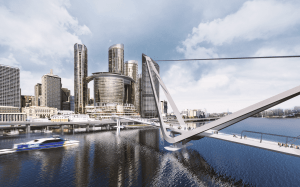
The Goodwill Bridge, opened in 2001 to carry cyclists and pedestrians from South Bank to Gardens Point, is next, with a stylish design and a little coffee bar on one of its viewing platforms.
I love how it looks in the evening light, looking back to the CBD buildings and the lights of Victoria Bridge.
At Gardens Point the clean line of Captain Cook Bridge links the Pacific Motorway to the Riverside Expressway. Opened in 1973, in the time of Premier Joh Bjelke-Petersen, when modernisation was everything and cars were king, the bridge has no pedestrian or cycle access. We travel under it and watch joggers and evening pedestrians in the riverside parkland, and climbers spread-eagled under the lights on Kangaroo Point Cliffs.
Ahead the tall, lit-up buildings of Petrie Bight come into view, and on the next bend the Story Bridge.
The heritage-listed Story Bridge is the most iconic of Brisbane bridges. A massive steel structure, it was built as part of public works programs during the Great Depression and opened in 1940. (See my story Brisbane Icons: Fig Trees and the Story Bridge.)
Sunset fades from the sky and the lights of the bridge and high-rises shine on the water. Howard Smith Wharves, with bright and noisy hotel, restaurants and bars, slide by.
The bridge is high above us as we steady our cameras against the movement of the speeding ferry.
The Story Bridge looks magnificent reflected in our wake.
At the next CityCat stop, Mowbray Park, we disembark to catch another ferry back upstream.
To see more of Brisbane’s bridges, Angus and I might take a cruise upriver one day, under the bridges at Indooroopilly and Jindalee.
The utilitarian-designed Centenary Bridge, opened in 1964, carries the busy Centenary Highway between Fig Tree Pocket and Jindalee.
From under the bridge, shady walkways lead downstream past mighty riverside eucalypts and fig trees, the treasures of Brisbane’s riverside parks.
At Indooroopilly, on a deep bend of the river, there are four bridges: the road bridge, two rail bridges and a cycle and pedestrian bridge.
I lived at Indooroopilly with my family (see my story Gully of Leeches) when there were just two bridges. I used to ride my bike to school across the white, art deco Walter Taylor road bridge, under its towers and past the tollbooth. The northern tower of the bridge famously included an apartment, where washing was sometimes strung to dry high above the traffic.
Until it opened in 1936, the only bridge at Indooroopilly was the Albert Railway Bridge carrying the Ipswich Line. Another rail bridge was opened in 1957, and in 1998 a pedestrian and cycle bridge on the downstream side.
If we’d stayed on the downstream CityCat, Angus and I would have come within sight of the twin Gateway Bridges, officially named after Sir Leo Hielscher, lit up dramatically and arching high above the river.
Opened in 1986 and 2010, the upstream bridge takes northbound traffic, while the downstream one carries southbound traffic as well as a cycle and pedestrian path.
Con and I walked one winter’s day from beneath the southern end of the bridge, up to the top. From the viewing platform there, we could see down to the river mouth and Moreton Bay. It was a long slog to the top of the bridge, but not too steep, as it was built to carry heavily laden semi-trailers.
Other cycle and pedestrian bridges are in the planning stages, to link Saint Lucia and Toowong to West End, and Kangaroo Point to the City Botanic Gardens.
I can remember when old Maiwar was treated with little respect, as a flood-prone dumping-ground that people crossed in a hurry in cars, buses and trams. Now it has been reclaimed for pedestrians, cyclists and ferries, and its banks and its bridges are sources of pleasure and pride for Brisbanites.
How would you like to be
Down by the Seine with me
Oh what I’d give for a moment or two
Under the bridges of Paris with you…
(Eartha Kitt 1953)
The Seine in Paris has 37 bridges, but crossing approximately thirty-five kilometres of the river in Brisbane there are just sixteen. The Brisbane River is wider than the Seine, and not as easily bridged, or tamed; and the bridges of Brisbane are not as classically elegant as the bridges of Paris, made famous by Eartha Kitt in her sexy version of this famous song.
But I love our Brisbane bridges.
All are spectacular; some are iconic; and old Maiwar flowing beneath them is beautiful.
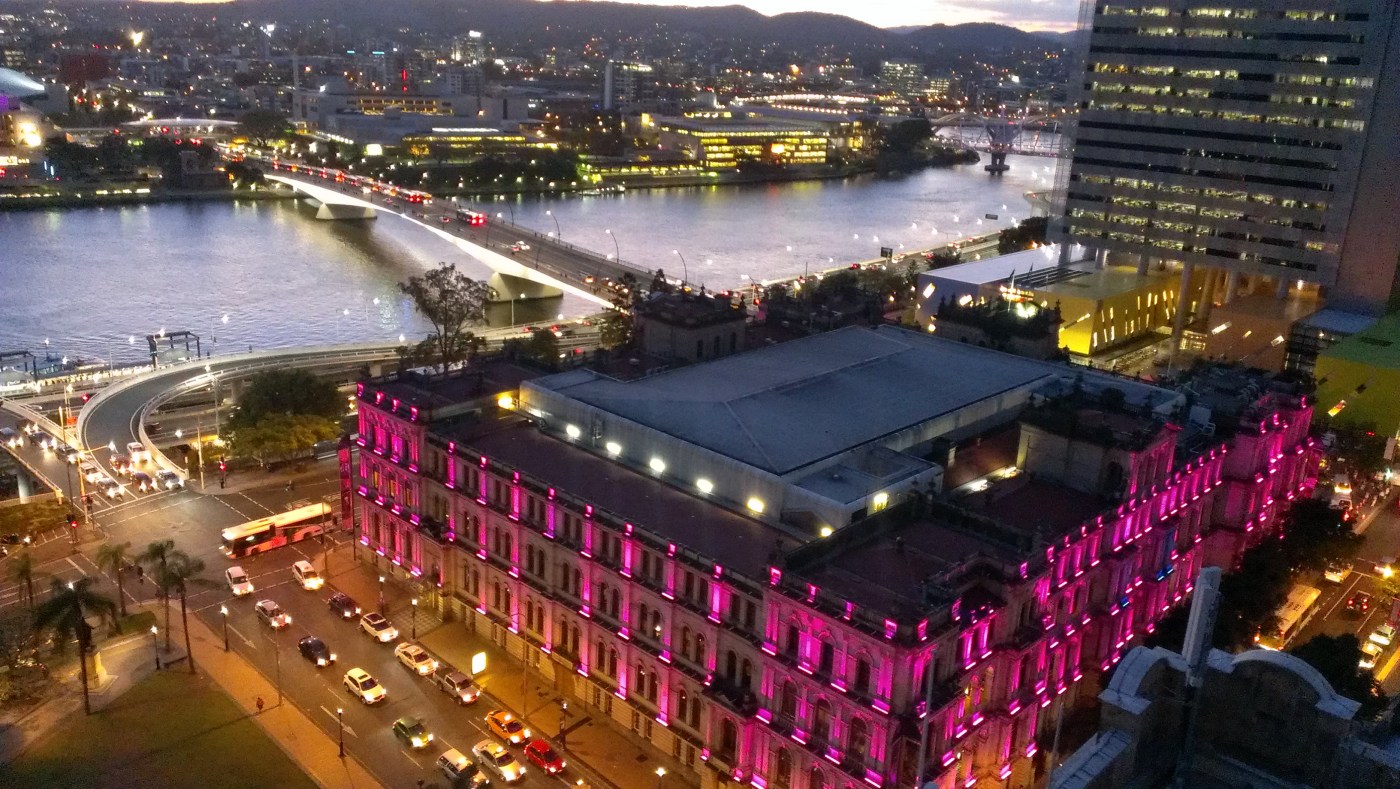
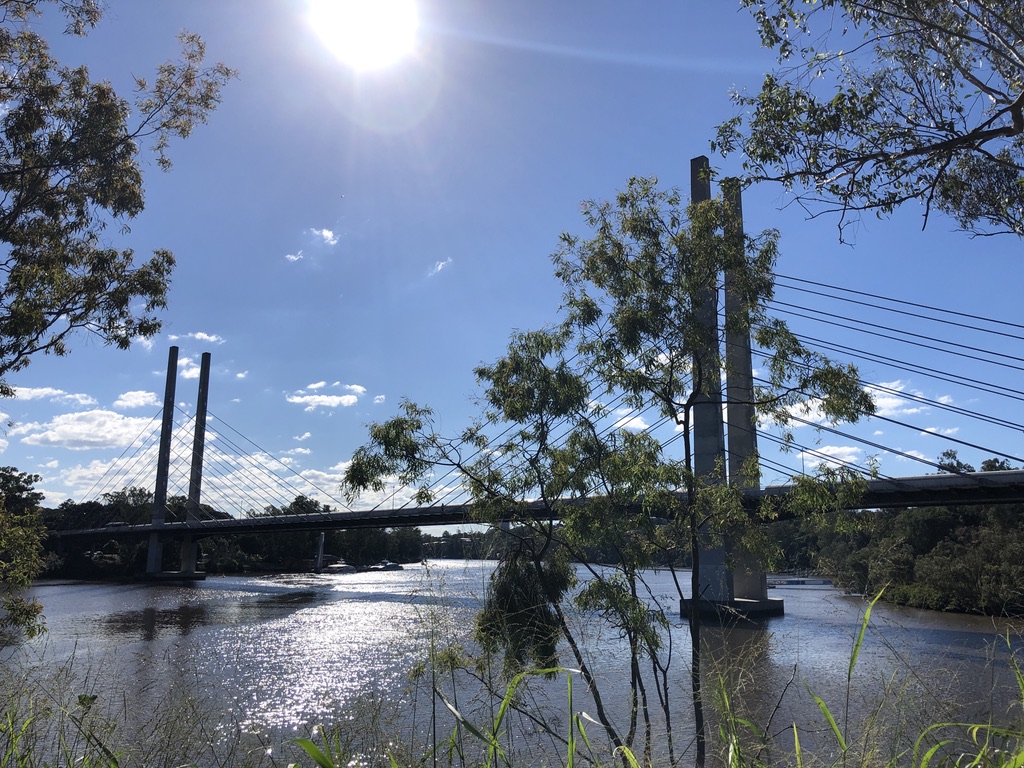
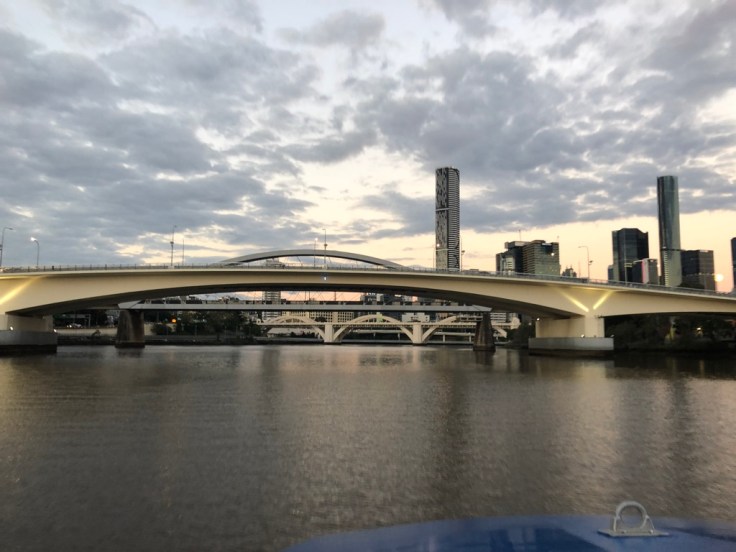


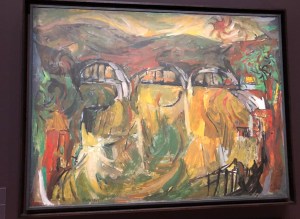




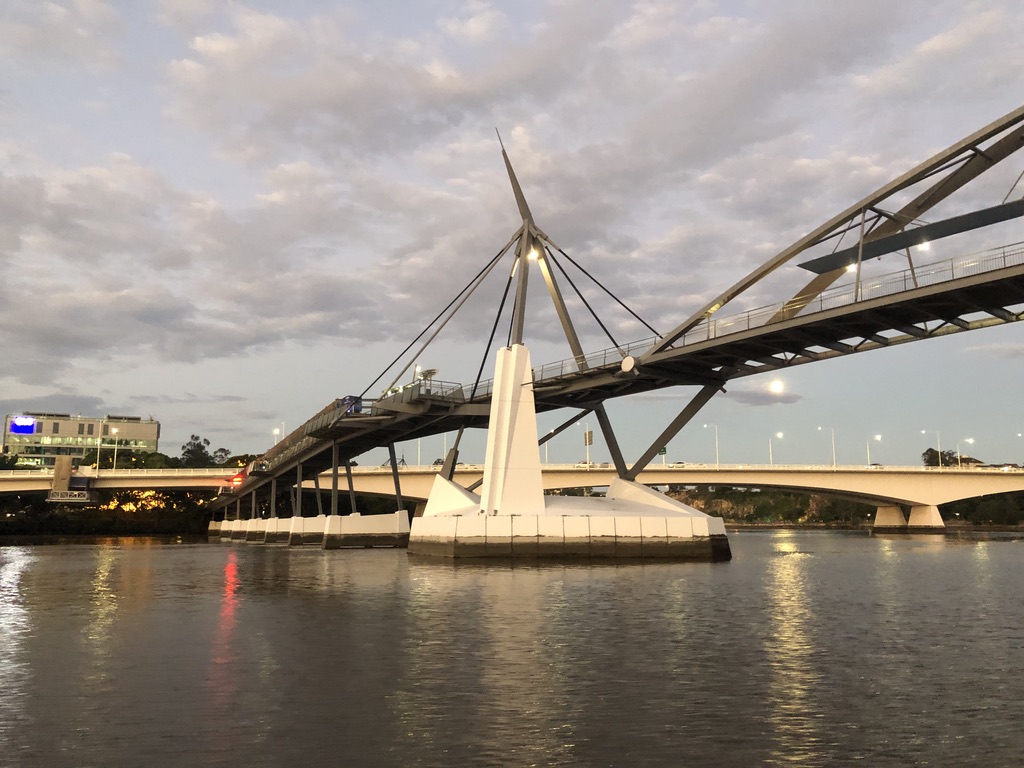
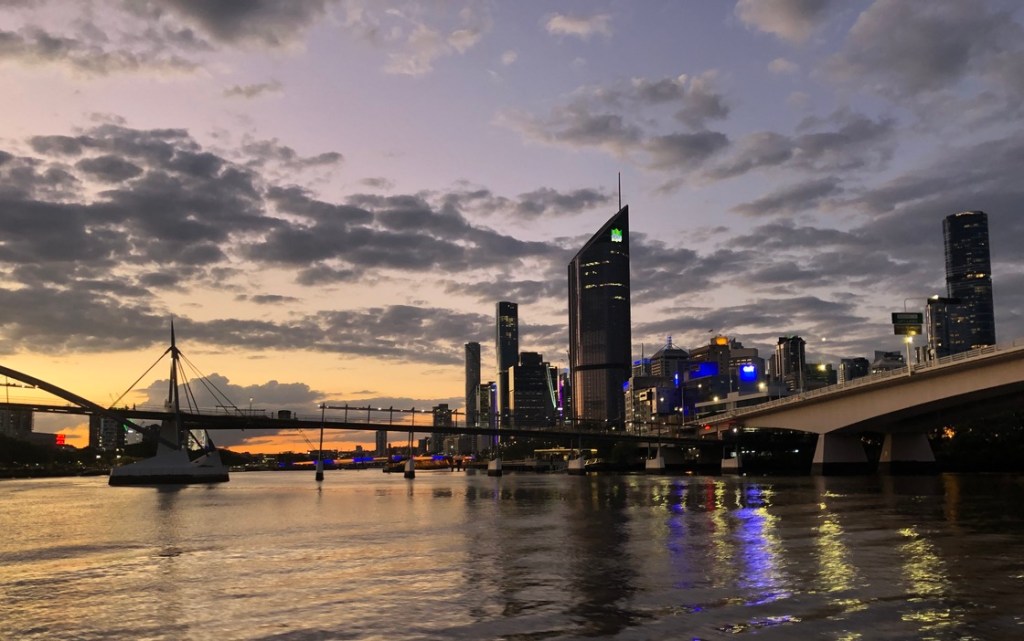

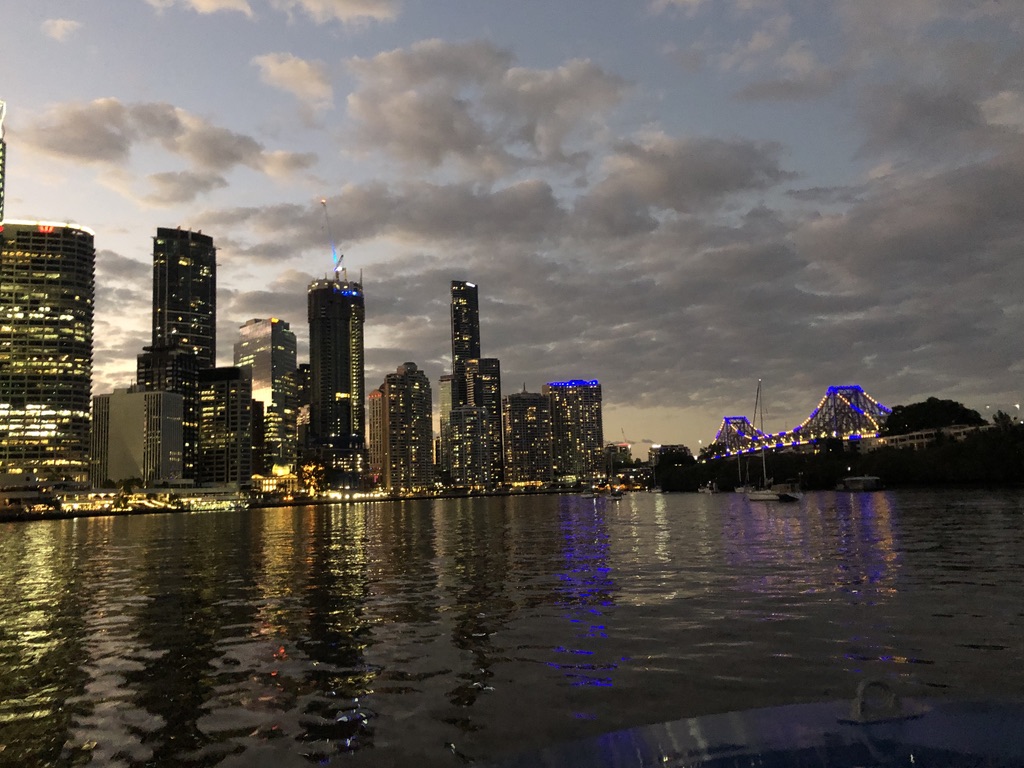


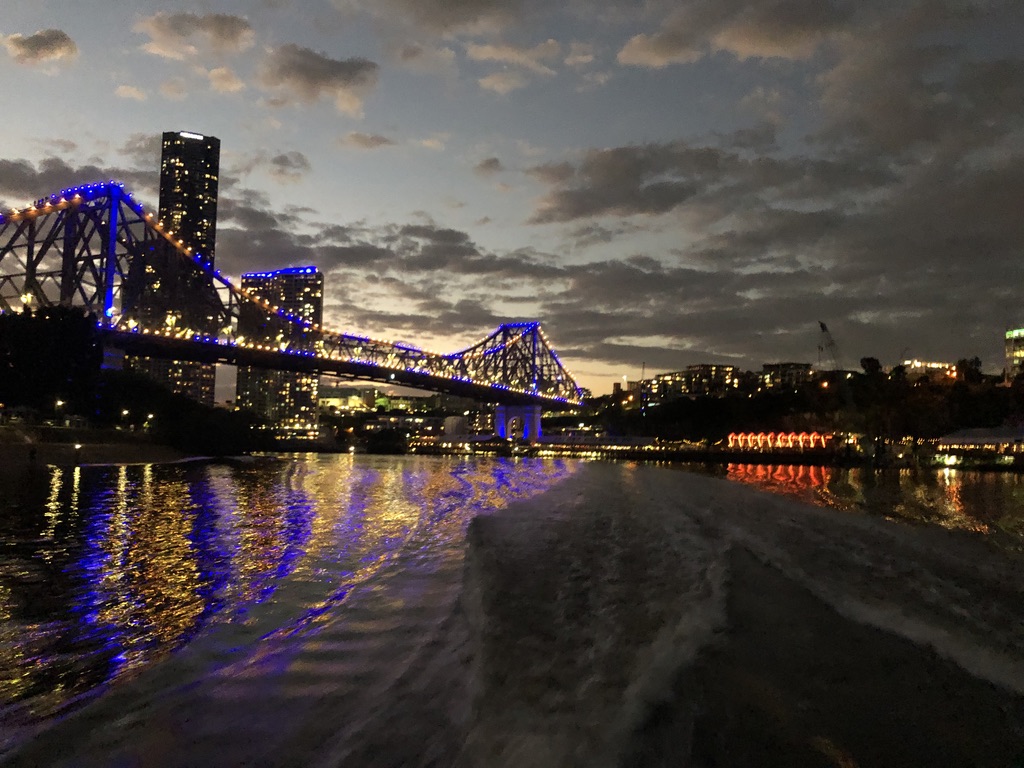

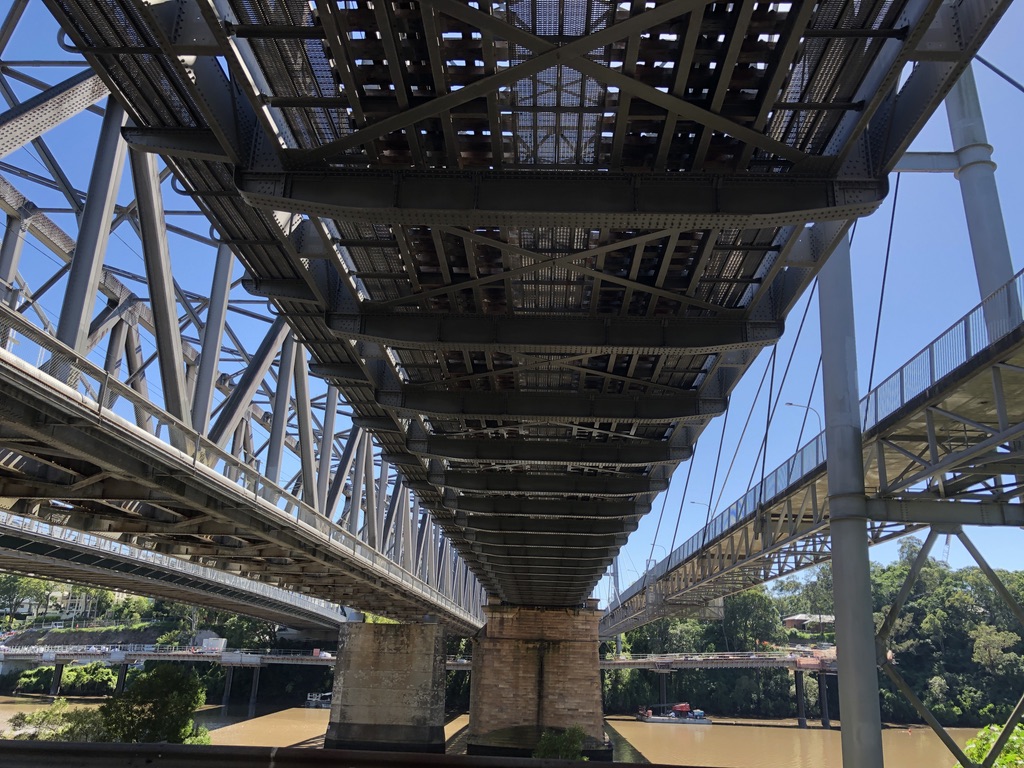
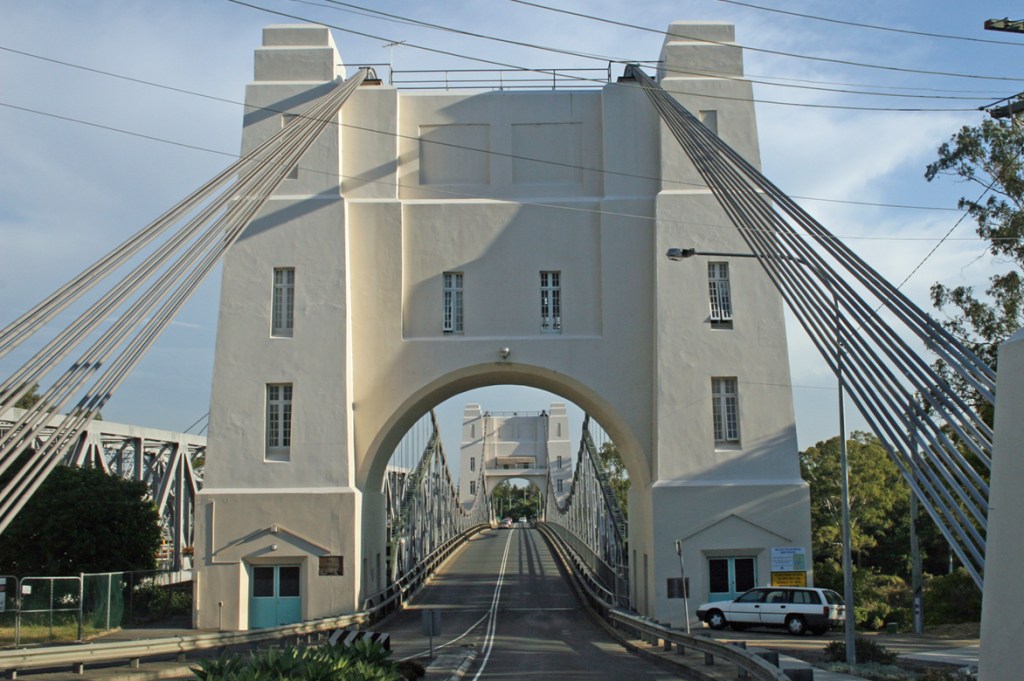
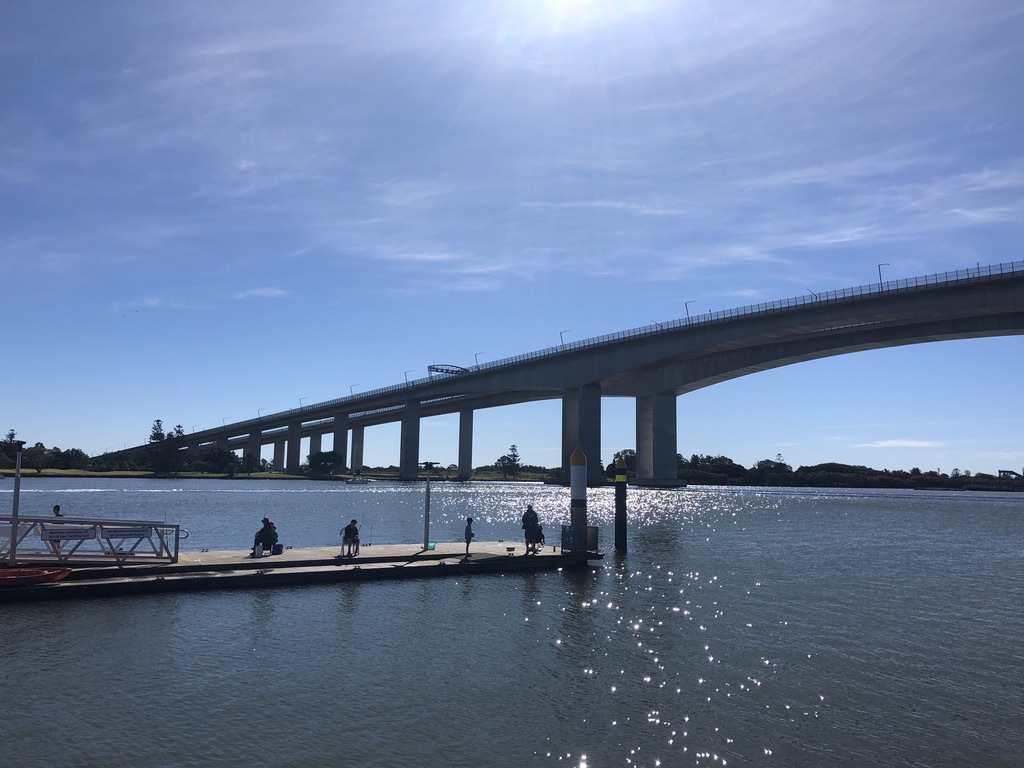

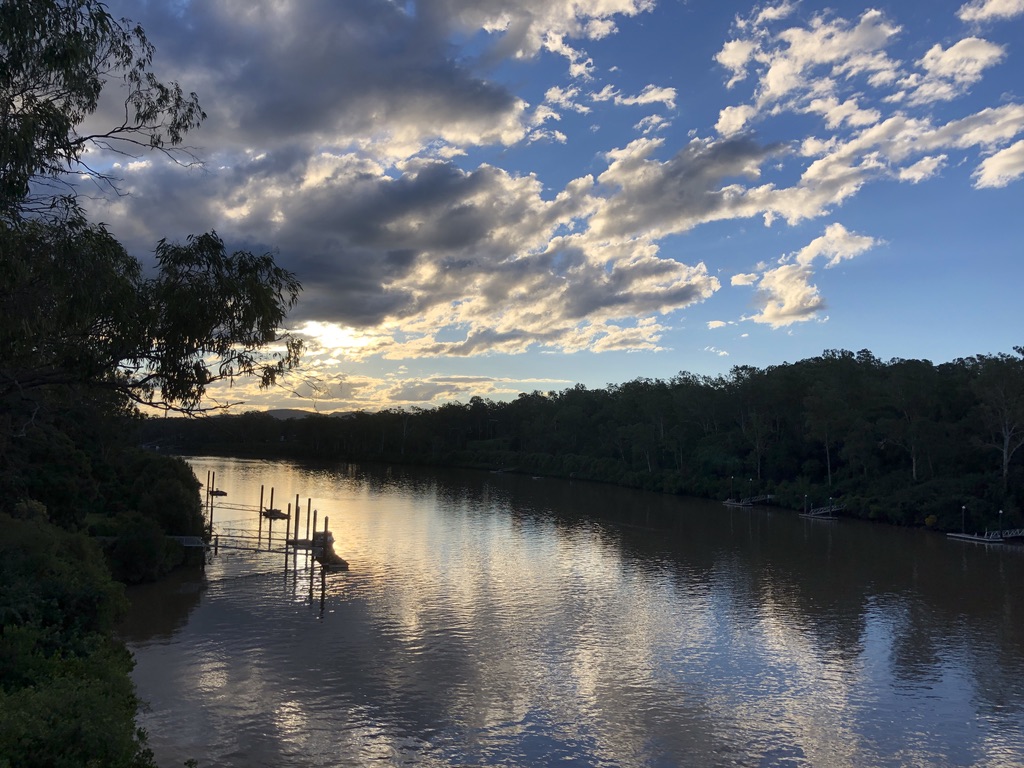
Rose, you have definitely bought a little Paris romance to our river and bridges. Thank you.
Michael Fox
LikeLiked by 1 person
Thanks, Michael. I just love the way the river has becomethe heart of the city. It started with Expo88, I think – and then South Bank Parklands. Suddenly it belonged to us all, not just those who could afford fancy riverside real estate at Hamilton, St Lucia or Fig Tree Pocket!
LikeLike